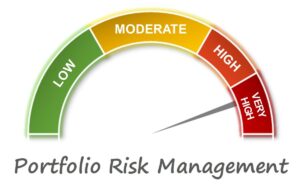Diversification can help mitigate risk and increase the odds that your investment portfolio will grow over time. It starts by selecting an asset mix that suits your investment time horizon, financial needs, and tolerance for volatility. Diversify each asset class further. For stocks, this means ensuring an equal mix across company size (large-, mid, and small-cap companies) as well as investment style (growth versus dividend). Diversification should also encompass various bond types with differing maturity lengths.
1. Diversify across asset classes
Diversifying by investing across asset classes such as stocks and bonds is the easiest way to spread out market risk. Diversification across this spectrum provides significant protection from market fluctuations.
Diversifying across industries is also crucial, since different businesses will respond differently to economic cycles. Bonds with various maturity lengths and alternative investments such as precious metals, real estate outside REITs, or cryptocurrency can further mitigate risks. Finally, investing with low costs is of critical importance; transaction fees and fund management charges can significantly diminish returns over time. Rebalancing your portfolio periodically to maintain its intended asset allocation is also highly recommended.
2. Diversify within asset classes
Diversifying an asset class such as stocks, bonds, or real estate helps reduce risk and protect against losses while expanding long-term growth potential. Diversification does not ensure a profit or protect against loss, but an investment portfolio carefully tailored to meet your goals, time horizon, and risk tolerance can provide steady long-term growth.
Diversifying equity portfolios means investing across various sectors, industries, and geographic regions so as to reduce the impact of economic decline in one area by compensating with growth elsewhere. Bond diversification strategies also use issuer type and maturity length diversification in order to lessen interest rate changes and mitigate credit risks.
3. Diversify within sectors
Your asset allocation will depend on your goals, risk tolerance, and investment horizon. However, for an excellent starting point, diversify within each asset class by investing across sectors, companies, and geographies.
Unsystematic risk, the kind that only applies to specific companies or sectors, can be reduced through diversification – for instance, if one sector experiences an economic downturn, another may do better and help offset losses. Diversification can also be enhanced when you invest in both growth and value stocks as well as domestic and international markets. When it comes to bonds, diversifying between issuers with short, medium, and long maturities further diversifies your portfolio.
4. Diversify within industries
Diversifying within industries helps limit the impact of losses in one sector or industry on your overall portfolio. For instance, investing in both growth-oriented stocks and value stocks with international markets helps minimize risks.
Diversifying investments across small-, mid and large-cap stocks as well as high-yield bonds is also beneficial; research¹ indicates that diversification helps manage volatility while increasing returns over time. Be mindful that even a well-diversified portfolio can lose money over the short term, which makes regularly rebalancing your portfolio important to ensure it reflects its target asset allocation, and fees can eat into returns significantly.
5. Diversify within companies
Diversifying within companies is an excellent way to lower overall risk and increase returns while at the same time mitigating company-specific risk, where shares could drop due to factors like new competition, declining profits, or reduced demand. Diversifying within companies also can help mitigate individual company-specific risk (i.e., idiosyncratic risk).
To reach your financial goals, you need to spread out your assets. To accomplish this, select index funds with broad diversification at low costs and rebalance them regularly back towards your target asset allocation, taking into account changes to life circumstances or investment time frames. However, diversification cannot ensure returns or prevent all losses; only diversifying is truly guaranteed protection against risks.
6. Diversify within bonds
Diversifying investments across each type of stock investment is vital, since doing so reduces the risk of any single stock dominating your portfolio and helps it better withstand market downturns. You can diversify by market capitalization (small, mid, and large caps), sector, geography, or credit quality (MBSs have historically had low correlation with stocks).
Investing in broad-based index funds and ETFs can provide an easy and straightforward way to diversify your bond portfolio by tracking various market indexes. Just remember to regularly rebalance your portfolio to avoid dissatisfaction!
7. Diversify within tangible assets
Investments in tangible assets can be an excellent way to diversify your portfolio, provided they meet both your investment goals and risk tolerance requirements. It is crucial that these decisions take place carefully so as not to overburden yourself or become overburdened with risk.
For instance, when investing in real estate, spread out your capital among multiple properties with differing time horizons and geographic locations to reduce risk and maximize profits. This strategy will help to protect both you and the market. Diversification can be complex, but there are ways to accomplish it efficiently. An asset allocation plan and periodic rebalancing will help ensure your portfolio continues to meet your original goals and risk tolerance requirements.
8. Diversify within intangible assets
Intangible assets can provide your portfolio with greater diversification by helping spread risk more evenly than with traditional investment types like real estate or alternatives (like cryptocurrency and collectibles), private equity, or debt investments.
All too often, we hear, “Don’t put all your eggs in one basket.” This popular phrase perfectly sums up why diversifying your portfolio is key to successful financial management. Though it can be daunting, diversifying your portfolio effectively is essential to protecting against risk. By diversifying among different industries and businesses, your risk profile will be spread evenly among asset classes.
9. Diversify within risk levels
Add investments with different levels of risk to your portfolio to help balance or lower its overall risk without compromising long-term returns. However, too much diversity could decrease returns if they’re too correlated.
Diversification strategies should depend on your investment timeline, financial goals, and risk tolerance. A financial professional can assist in choosing an asset mix to achieve these goals; periodic rebalancing ensures your portfolio stays in alignment with your desired risk-return profile. Fees are another consideration: high trading and fund management costs can eat into return potential.




